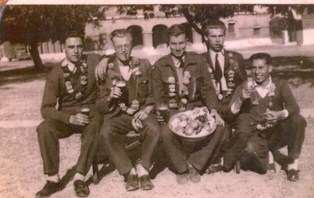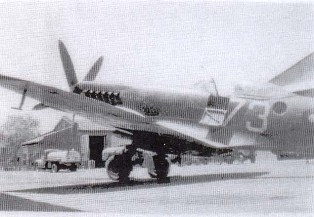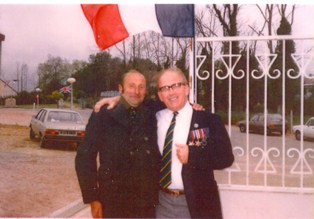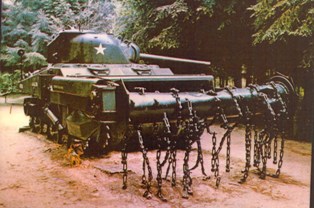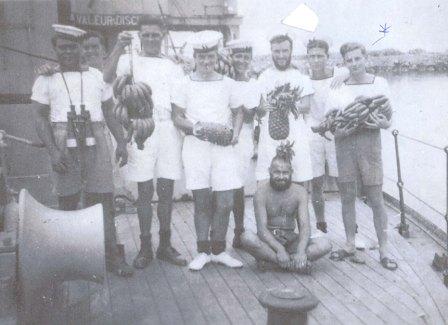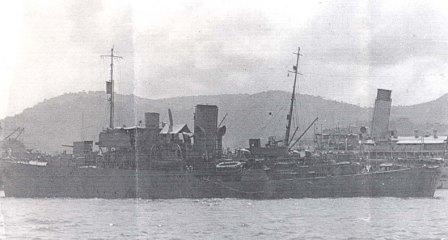
Private 13013 Bertie Charge
2nd Bedfordshire Regiment
Died of Wounds 18th October 1916
Son of Mr. and Mrs. David Charge, of High Street Green, Hemel Hempstead, Herts.
Bulls Road Cemetery, Flers, III. D. 30.
Born: Hemel Hempstead.
Enlisted: Hertford.
Residence: Hemel Hempstead.
Bertie Charge was born and lived in Hemel Hempstead, the son of Mr and Mrs David Charge, of High St Green, Hemel Hempstead. He served in the 2nd Battalion the Befordshire Regiment. He enlisted in Hertford and probably died, aged 25, in the closing weeks of the Battle of the Somme, near Bazentin-Le-Grand, approximately 7km west of Albert and 5 km south of Thiepval.
This is however impossible to say for certain. Charge is listed as DOW, with no further information given. This means the casualty in question could have died the same day they were wounded, in a casualty clearing station a kilometre behind the line, or weeks later in a main hospital further back from the fighting. Furthermore it is unclear when Charge or any casualty listed as DOW received their wound. Therefore the incident could have occurred at any point in the preceding days or weeks. However in this case it is possible to say with a fair degree of certainty that Charge was mortally wounded in the large attack undertaken by the Battalion on the 12th of October, 5 days before his death on the 18th.
On the day before the attack, the 2nd Bedforshires relived the 17th Kings Liverpool Regiment from their position in the trenches near Bazentin-Le-Grand. H hour for the attack on the 12th was set as 2.05 PM, the enemy were only 250 yards away. Interestingly at 11 AM that morning, a large party of about 50 Germans attempted to surrender, but were shot at by an unnamed party, and thought the better of it. The attack was organised into 4 waves. C and D companies formed the first two waves, with B forming the 3rd wave and A in support as wave 4., 100 yards were kept between each wave.
At 2.05 the attack began, there’s no mention of a preceding barrage but it can be assumed there was one. The advance had no issues for the first 50 yards, and it was not till the first wave crested a small ridge that “a terrific volume of rifle and machine gun fire poured upon them”. The attack advanced to within 5o yards of the german line before becoming pinned down by the sheer volume of fire. B company in the 3rd wave reinforced the attack and pushed forward, eventually capturing a trench from the Germans despite heavy and sustained enfilading fire. The Battalion then consolidated their position and further fortified the new trench again under heavy fire, digging a trench between their position and that of the 17 Battalion the Manchester Rgt on the right.
Throughout this ordeal the majority of D company spent the afternoon and evening cut off from the main force about 70 yards to the west. Several attempts to link up failed due to heavy enemy fire, and they had to wait till nightfall to withdraw. Finally returning at dawn on the 13th.
For a total gain of 200 yards the battalion suffered 252 casualties. 49 dead, 49 missing, 2 wounded and missing, 147 wounded and 5 cases of shell shock. This last casualty figure is interesting as it shows that contrary to popular opinion even in 1916 the British Army recognised shell shock as a real medical condition, and was included in the figures as such. The 2nd Beds were the only battalion on the entire corps frontage to take and hold ground, all other units being forced back to their start lines. The human cost of such a minimal gain in territory is astounding, for every 4 yards gained a man died, and that’s without considering those were were mortally wounded but not KIA, like Charge.
As we have no indication of which company Charge was in, it is impossible to narrow down when he was mortally wounded. It could have occurred at any point, during the attack, during the digging in or maybe he was a member of the cut off D company. Or maybe his wounds were sustained even earlier still and he had lain in a military hospital for months before his eventual deat. The records are unclear.
Charge died in the the Somme Offensive, one of 481,842 British casualties and 1,332,156 total casualties. The battle raged from 1st July to 18th November 1916 and resulted in an allied advance of about 6 miles (9.7 km) across a front of 16 miles (26 km), equating to 133 dead men for every metre of ground taken. This means a proportion of humanity equivalent to the entire population of Liverpool’s larger urban area were British casulaties for an advance slightly less than the distance from Watford Junction station to Hemel’s ‘Magic Roundabout’ across a front roughly equal to the distance from Watford to Tring.
Sources:
- 2nd Bedfordshire Regiment War Diary, Catalogue Reference: WO 95/1658
By Matt James
September 2016
